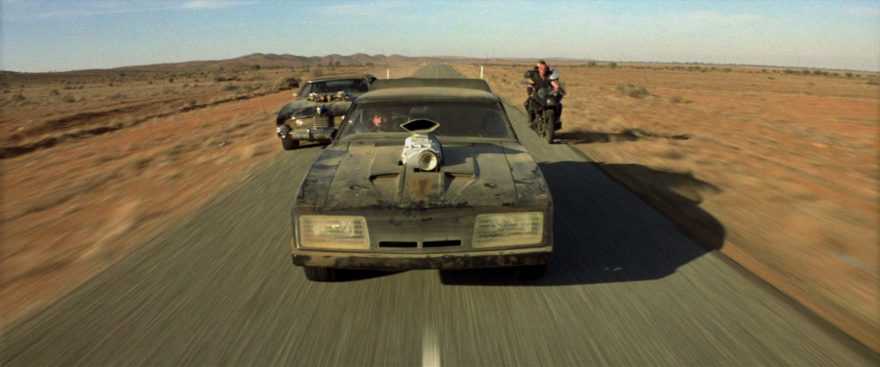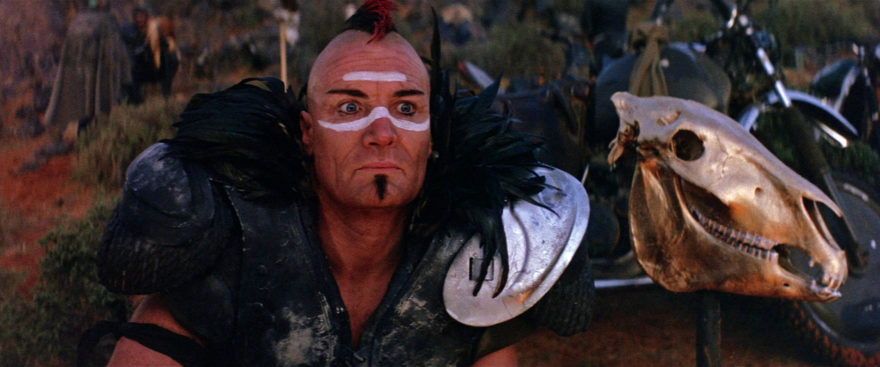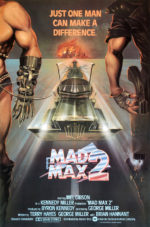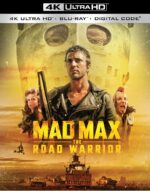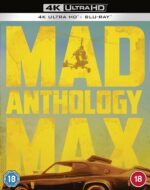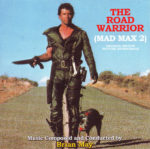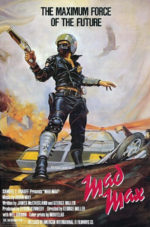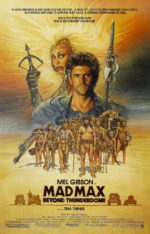Filled with gripping, high-speed car chases and positively medieval weaponry, Mad Max 2: The Road Warrior forever changed post-apocalyptic films with its brutal vision of a sadistic and hopeless future. In a desert landscape where fuel is rare, a loner finds himself drawn into a savage battle over an isolated oil refinery—one of the last remnants of a dead civilization. Scheming only to get a full tank of gas, he instead finds a chance to redeem himself and find hope for a better future.
Max is a lone wolf, a man who has lost everything he ever loved, and now he cruises the highways in his turbo-charged muscle car looking for fuel and food. Attacked by a bloodthirsty gang, he forces one of them to crash—and after racing to the site of the wreck—he ignores the mangled driver and begins sopping up the gasoline leaking from the tank. This is a world where you have to be willing to do anything to survive.
Max’s only companion is his trustworthy and obedient dog; he keeps humans at an arm’s length. He captures a fellow human survivor, who becomes the closest thing he has to a friend: but only to a point, one night Max reveals he has a precious can of food. He eats first and then tosses the half-empty can to his dog—his human captive gets the dog’s leftovers.
The film plays as well today as it did when it was released because these themes never go out of style. It shows what people become with no society, no rules. Being stripped down to the basics reveals humankind at its most brutal, and at its selfless best.
Leonard Maltin called The Road Warrior, “a model for action movie making.” It is packed with spectacular high-speed road battles and stunts that had never before been attempted, including a motorcycle wreck propelling a biker 65 feet through the air, and a full-size tanker truck crashing and rolling at almost 70 miles per hour.
It also features an authentic gyrocopter—basically a chair with a helicopter blade above it that really flies. And keep in mind that this was before digital effects: the film uses real vehicles driven by real people in real locations. In fact, a stunt man was nearly killed when he broke and injured his leg while filming a sequence that appears in the movie.
But this film also a saved a life: Max’s trusty companion, an Australian Cattle Dog, was discovered in a local pound and was cast the day before he was scheduled to be put to sleep—after the shoot he was adopted by a crew member.
Mel Gibson, who was not yet an international star, embraced the role and endured freezing temperatures during the shoot—between takes he wrapped himself in a blanket to try and keep his teeth from chattering. And in order to make his character look even more ragged, he gave himself a bad haircut and even plucked out a chunk of hair from his eyebrow.
The gritty, sadomasochistic “scrapyard leather chic” feel of the film was revolutionary at the time and has influenced almost every post-apocalypse film since. The film’s costume designer even raided local S&M shops for some of the costumes. And many of the bit players, who came from the nearby mining town, were initially embarrassed by the Mohawk haircuts they had to get for the film. At first they wore caps to hide them, but by the end of the film they came to love the look.
Produced in Australia and budgeted at $4 million, it was the most expensive Australian film ever made—at the time—and featured, allegedly, the largest set and the largest explosion of any Aussie film.
While they were filming, there was a freak rainstorm in the desert—the first in four years—and everything turned green. They had to delay the shoot for a week until the plants died off. Ironically, about thirty years later, in the same desert location 800 miles outside Sydney, as they were preparing to shoot the 2015 sequel, Mad Max: Fury Road, heavy rains once again turned everything into a garden paradise. This time the entire shoot was relocated to Namibia, Africa.
The Road Warrior is one of those rare films that enjoyed both critical and box office success and then went on to become a cult classic. Praised by Roger Ebert, Leonard Maltin, Vincent Canby and many others, the film was recognized for its mythic Western overtones and exhilarating action sequences—and it still holds a 100% fresh rating at Rotten Tomatoes. It received the prestigious Hugo Science Fiction Film Award and the Los Angeles Film Critics Award. And even Max’s iconic vehicle, a customized 1974 Ford Falcon, has become a piece of history at Florida’s Miami Auto Museum.
Enjoying the site? If so consider supporting it with alien-infused caffeine…


